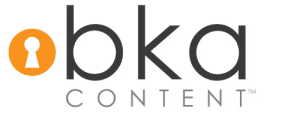
There are three key trends that are driving a needed change in the way that leaders and employees work together. It’s having an impact on organizational structure, roles and responsibilities and the technology used in the workplace. While the changes will be difficult and confusing for many at first, there are some exciting examples of organizations that are blazing the trail. Two keys to success will be a strong focus on culture and enabling technology. With human resources at the pivot point of so much of these shifts, they will play a key leadership role in enabling this change within organizations.
Trends Driving Changes to Traditional Human Capital Management (HCM)
1. Technology is democratizing the power to change the world and this is happening at an accelerated pace. 78% of businesses feel threatened by digital startups. This is driving the need to be more innovative and agile. Something that is not helped by top-down, command and control organizational models. In Deloitte’s Human Capital Trends, they found that fast-moving global markets and digital disruption have forced companies to innovate rapidly, adapt their products and services, and stay closer than ever to customers. This has prompted a resurgence of interest in organizational structure. Their findings in this area are startling: 92% of companies believe that redesigning the organization is very important or important, making it the highest ranked item among this year’s respondents. Companies are decentralizing authority, moving toward product and customer-centric organizations, and forming dynamic networks of highly empowered teams that communicate and coordinate activities in unique and powerful ways. 80% of the respondents to 2016’s global survey report that they are either currently restructuring their organization or have recently completed the process. Only 7% say they have no plans to restructure.
2. Demographic and psychographic shifts are changing people’s expectations for how they collaborate in the workplace. In Aaron Hurst’s book “The Purpose Economy” he states that the future is purpose. It’s what is driving innovation and radically reshaping careers and organizations. We are prioritizing relationships, impact, and personal growth and in the process, changing the economy. We no longer come to work as a way to earn a paycheck. We also look to work as a way to connect to our purpose. In addition, millennials are now the largest demographic in the workplace. They are the most educated group to join the workforce and they want to put that to good use. They grew up with technology that broke down barriers and so they don’t see hierarchy the same way. These attitudes will have a huge impact on management styles, with 28% now in management roles. All this points to a much stronger need to collaborate with leadership on priorities, a need to have a stronger sense of co-ownership and less tolerance for a chain-of-command style of workplace.
3. Technology within the workplace is enabling a different style of collaboration that wasn’t possible before. In the book “The Conversational Firm” by MIT Sloan’s Catherine Turco, she looks closely at a new organizational model that companies can shoot for today. This model has become possible, and perhaps even necessary, on account of the communication technologies now available and the habits and expectations that today’s employees bring into the workplace. She calls the model the “conversational firm,” and it’s the idea that organizations can have far more open dialogue across the corporate hierarchy than we ever before thought possible.
These trends are driving new organizational structures
The Deloitte Human Capital Trends makes the statement that the world is moving from a top-down hierarchical model to one of a “network of teams” in which people are iterating and solving problems in a dynamic, agile way. This shift in structure, roles, and careers changes the way we lead, manage, reward, and move people throughout the company. While it’s going to feel uncomfortable in the short term, this change is a good thing.
In a Harvard Business Review article, Gary Hamel and Michele Zanini make the statement that excess management is costing the U.S. $ 3 trillion per year in lost productivity. More people are working in big, bureaucratic organizations than ever before. Yet there’s compelling evidence that bureaucracy creates a significant drag on productivity and organizational resilience and innovation. They reckon the cost of excess bureaucracy in the U.S. economy amounts to more than $ 3 trillion in lost economic output or about 17% of GDP.
The obstacle it seems is figuring out exactly how to adapt organizational structure. The Deloitte Human Capital Trends study found that although 92% of companies believe that they are not organized to succeed, only 14% know what this “new organization” looks like.
There are vanguards leading the way that show it can be done and the results are promising. Several organizations have famously adopted managerless structures like holacracy or the lattice organization structure. These organizations report lower turnover, higher levels of engagement, and better bottom-line results than their peer group.
But not all organizations are making radical changes to organization structure. The Swedish bank, Svenska Handelsbanken is an interesting example. While still a more traditional hierarchy, operating decisions are almost entirely decentralized. Each branch makes its own loan decisions, sets its own pricing on loans and deposits, controls its own marketing budget, runs its own website. Nearly all of these practices run counter to conventional banking wisdom, which holds that to be efficient a bank must consolidate operational activities and centralize decision making on matters like pricing and lending. Yet, Svenska Handelsbanken has consistently posted industry-beating cost-to-income and loan-loss ratios.
It will impact roles and responsibilities
With a decentralized organization, the focus for leadership needs to shift to developing and maintaining a culture and leveraging the right technology to facilitate ad-hoc collaboration.
In the book, “The Conversational Firm”, Catherine examined one tech company’s success in decentralizing collaboration while maintaining a traditional hierarchy. There were two keys to accomplishing this:
- Leadership fostered a culture that genuinely wanted to be able to tap into the organization’s collective wisdom to confront business challenges. We write more about the need for this style of leadership in our post on the inverted organizational structure.
- It leveraged today’s communication technologies to allow for collaboration across hierarchical, geographic and functional silos. We write more about new collaboration technologies and what we call vertical collaboration (two or more people within a hierarchy working together towards a common goal) in our post on the next trend in enterprise software.
It is impacting technology within HCM
Human Resources will need to play a critical role in helping organizations navigate the changes between how leaders and employees work together. Technology and culture will be intertwined and to that effect, there will be a significant shift in the next couple of years towards what the Starr Conspiracy is calling HCM 2.0.
Common features and functionality shared among HCM 2.0 solutions are:
- A focus on innovation, not automation: HCM 2.0 solutions fundamentally rethink talent processes instead of simply mirroring traditional analog processes.
- A flow of information that moves in all directions, not just from the top down: HCM 2.0 solutions facilitate the exchange of information from the bottom up and horizontally across the org chart, in opposition to the old “command and control” school of information flow. The priority in HCM 2.0 is on-demand access to information (pull, not push).
- A design for the 21st-century workforce: HCM 2.0 solutions are designed based on how work actually gets done in today’s workplace: mobile, social, collaborative, employee-centric, and focused on delivering strategic value.
While the technology to facilitate a modern collaboration between leaders and employees is readily available today, skills and culture at many organizations will need to catch up. Human resources is in a unique position to lead these changes across the organization.
Business & Finance Articles on Business 2 Community(111)
Report Post






